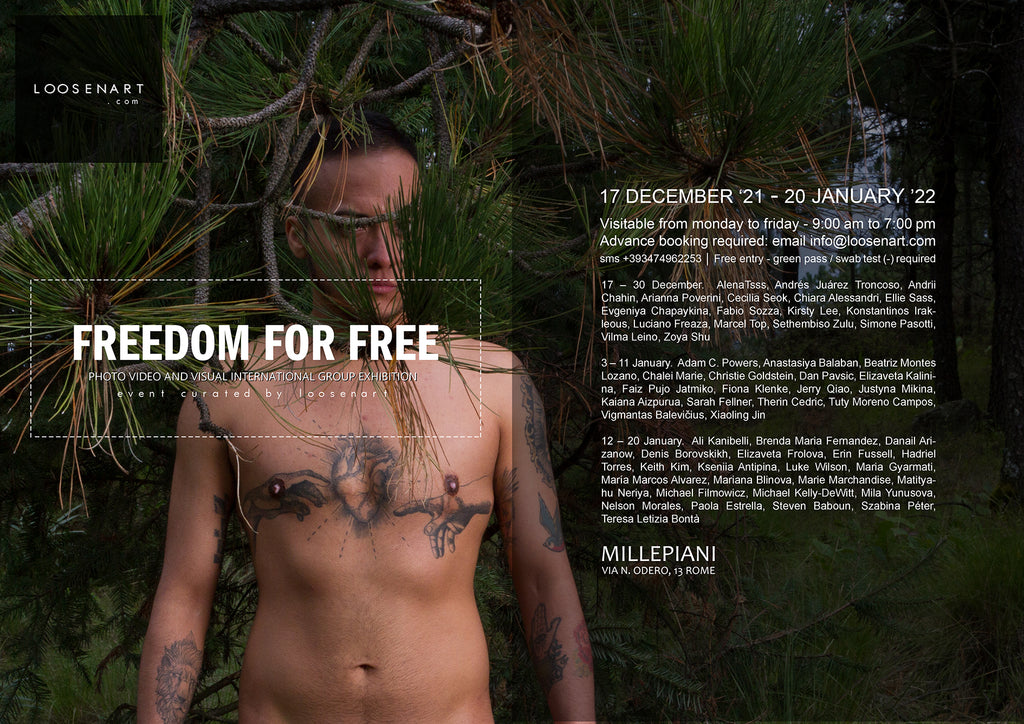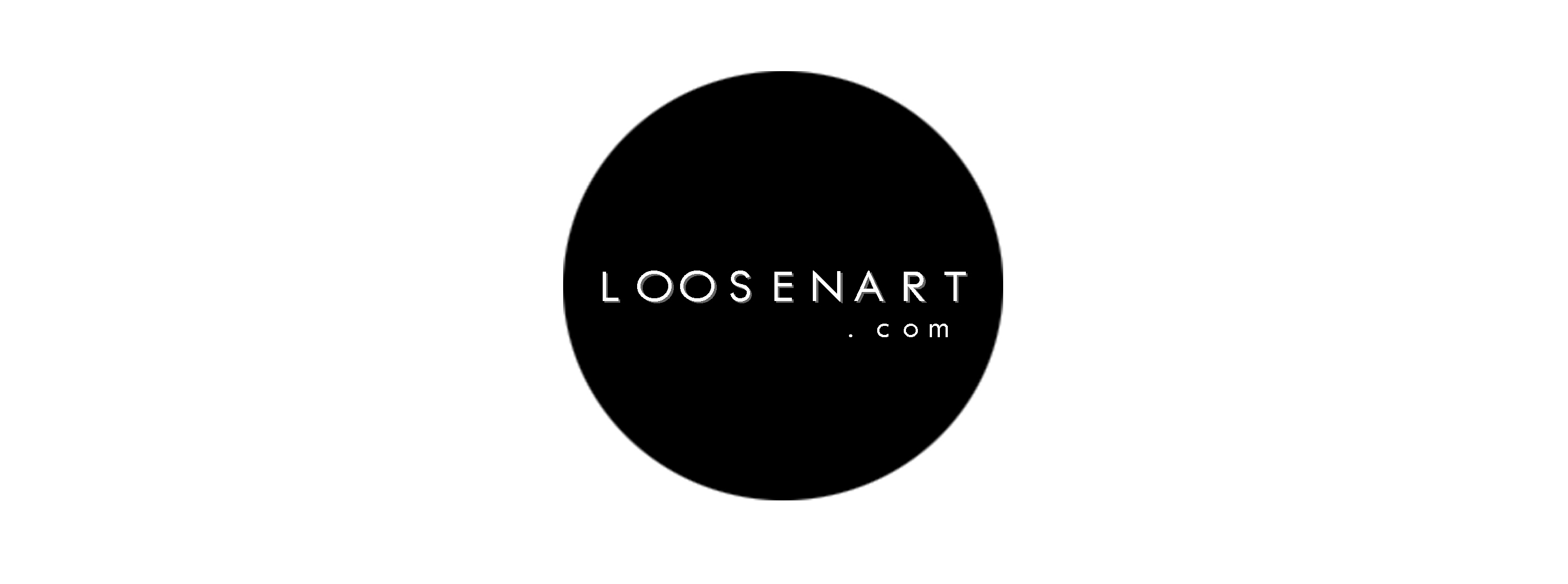Freedom for Free
Posted on December 29 2021
 +
+
Author Silvia Colombo
.
.
Freedom for Free │ December 17th, 2021 - January 20th, 2022
.
.
Talking about freedom - and, in particular, about the one that is taken for granted, not pretending nor asking for anything in return - means dealing with a lot of possible interpretations, more or less conventional and literal. Many of them are exhibited at “Freedom for free” that, through photographs, digital pieces and videos, activates an interesting, polyphonic monologue capable of accompanying the visitors along a path which is at the same time peculiar and universal. Despite the pieces showing unique and personal features, they cross each other until they sometimes meet, raising questions, channeling the expectations of the public and lifting intellectual as well as emotional reactions. There is who represents freedom and its contrary, who prefers black and white instead of colours. But it is sure that, behind this irregular texture, there is a bundle of common feelings where the viewer finds relief and guidance.
.
The first touch point catching the eye of the beholder is the interest towards the body and its relationship with the environment surrounding it. Our body is at peace when immersed in a primigenial habitat (such as a forest, an open space, the water) where it finds itself with no restrictions or obligations. It is exactly thanks to this cohesion that we are finally able to feel ourselves free to accept who we are, and physical acceptance is the key to our personal freedom.
.
.

Sethembiso Zulu, Ukwambulelwa, 2019
.
.
The other visual pole presented within this exhibition is the landscape, considered as both a background and, most of all, a topic with its own status. Nature, exactly like our body, is free since primeval: it is a sort of earthly paradise that is all around us and yet difficult to be seen. But even the unseen is something representing a silenced - almost forgotten - freedom: it is existing but we cannot longer identify it. That is why representing and portraying even every minor detail is still necessary.
If, from the outside, we let our gaze move inwards, we will finally be able to detect another leitmotiv of the exhibition: the inner freedom, or rather the spirituality. The artists grappling with this aspect often chose strong chiaroscuro contrasts à la Caravaggio, where the light takes a significant place by symbolizing the divine and the spiritual. This last trait is also reconnected to a series of symbolic choices recurring in various pieces on show. For example, where light embodies the spiritual, water represents the invisible barrier we impose on ourselves, day after day, becoming a limit preventing us from enjoying our freedom. Also, the mirror is not only an expedient used for its features, but it is also a surface hiding worlds and universes behind it - as Lewis Carrol’s “Through the looking glass” (1871) thaught us.
If, from the outside, we let our gaze move inwards, we will finally be able to detect another leitmotiv of the exhibition: the inner freedom, or rather the spirituality. The artists grappling with this aspect often chose strong chiaroscuro contrasts à la Caravaggio, where the light takes a significant place by symbolizing the divine and the spiritual. This last trait is also reconnected to a series of symbolic choices recurring in various pieces on show. For example, where light embodies the spiritual, water represents the invisible barrier we impose on ourselves, day after day, becoming a limit preventing us from enjoying our freedom. Also, the mirror is not only an expedient used for its features, but it is also a surface hiding worlds and universes behind it - as Lewis Carrol’s “Through the looking glass” (1871) thaught us.
.
.
Arianna Poverini, Coelacanthus, 2021
.
.
Whithin the exhibition, this topic is also faced from a politically engaged perspective, becoming the feminist struggle against the patriarchy. Considered from this angle, freedom becomes the affirmation of ourselves, of our bodies and identity. To get to this point, the artists here make choices that are precise and accurate from the point of view of both the contents and the style.
The female body is the centrepiece, and it is often surrounded by a chromatic scale facilitating the association with the topic - the gradations between red and pink are recurring. Sometimes, it is also paired with the symbols of the struggle, such as flowers. Commonly, flowers are used as a metaphor for the fights in the name of freedom: the “Carnation Revolution” (1974), for example, put an end to the Portuguese dictatorship; and “Flower Power” is the motto that, between the Sixties and the Seventies, was used to indicate the hippie non-violent struggle.
In the end, the interesting part of the exhibition is precisely this: despite the differences and the peculiarities, one can easily retrace a common visual and emotional path. It doesn’t matter if freedom is individual or collective, physical or spiritual: it is always about freedom, different and equal for all.
The female body is the centrepiece, and it is often surrounded by a chromatic scale facilitating the association with the topic - the gradations between red and pink are recurring. Sometimes, it is also paired with the symbols of the struggle, such as flowers. Commonly, flowers are used as a metaphor for the fights in the name of freedom: the “Carnation Revolution” (1974), for example, put an end to the Portuguese dictatorship; and “Flower Power” is the motto that, between the Sixties and the Seventies, was used to indicate the hippie non-violent struggle.
In the end, the interesting part of the exhibition is precisely this: despite the differences and the peculiarities, one can easily retrace a common visual and emotional path. It doesn’t matter if freedom is individual or collective, physical or spiritual: it is always about freedom, different and equal for all.
.
.

Andrés Juárez Troncoso, Matias II, 2019
.
.

Vilma Leino, Female God, 2020
.
.

.
.
.
.
-
.
.
.
.

.
.
.
--------------------------------------------------------------------------------------------------------------------------------------------------------------
.
FREEDOM FOR FREE
December 17th, 2021 - January 20th, 2022
Millepiani - Via N. Odero,13, Rome - IT
linfo@millepiani.eu
+39 06.888.17.620
.
-
.
.
.
.
.
.
.
.
.
.
.
.
.
.

Connect